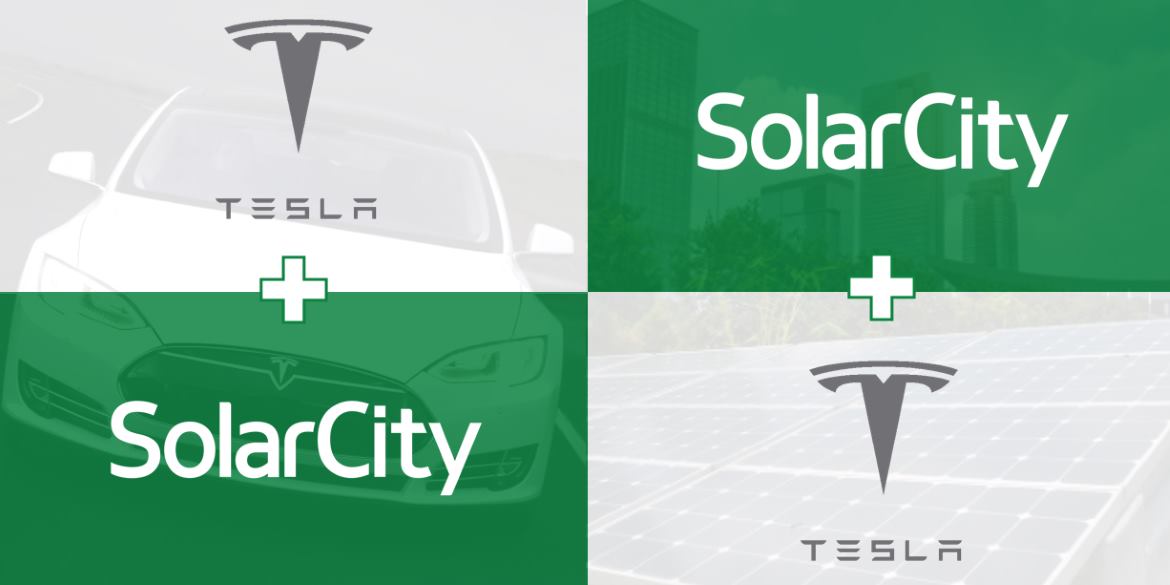On November 17, 2016, shareholders will vote on whether to approve the merger of Tesla and SolarCity. If approved, this merger would bundle together a triangle of disruptive distributed energy resources (DERs): rooftop solar, electric vehicles and battery storage. The attractiveness of Tesla products is undeniable, and as consumer interest multiplies so do their questions. While some utilities will take advantage of this opportunity to give objective, trusted advice and build their customer relationships (see some who already have in this on-demand webinar), undoubtedly, others will not.
Does this merger spell the beginning of the end for utilities?
Many would argue, yes.
They maintain that a customer can produce their home and transportation electricity needs during the day from their rooftop solar system, store most of that energy in their battery, and then discharge that stored energy throughout the non-daylight hours. And poof – goodbye utility.
Others contend that the amount of storage and rooftop solar capacity needed to reliably operate a home without the grid is so significant that the timeline to reach grid parity leaves utilities with more than enough time to evolve and develop new pricing and business models. Therefore, while storage can assist in storing some excess solar energy, the need for the utility doesn’t disappear with a rooftop solar + storage offering.
Regardless of the long-term outcome, one thing that is certain right now is that a triangle of disruptive DERs has formed (rooftop solar, electric vehicles and battery storage), and consumer interest is accelerating.
The Tesla-SolarCity merger is a call to action for utilities
Tesla’s customer loyalty rivals that of Apple or Amazon and they have the potential to impose similar levels of disruption on their respective industry, which is now broadening to include rooftop solar and battery storage.
Utilities are in a unique position to take advantage of this opportunity to guide customers from an early state of technology awareness, to fully understanding exactly what these new technologies mean for them, and into program participation. In an October 2016 Smart Grid study, 64% of the time customers seek information about solar and electric vehicles from their utility. With this advisor relationship, if utilities create a customer experience with a level of customer obsession that matches Tesla’s reputation, they can take control of this conversation and objectively guide customers into the best programs for their unique scenario. According to findings from a 2015 Utility Residential Customer Education Survey by Utility Dive:
“The utilities that succeed in educating their residential customers may be [the best positioned not only] to survive, but [also to] thrive in the new customer-centric electricity landscape that is now taking shape.”
Specifically, utilities must focus on engaging and informing customers when it comes to DER decisions. According to utilities surveyed in Utility Dive’s State of the Electric Utility 2016, their sources of new and emerging revenue streams depend on it: deploying EV charging infrastructure [52%], deploying distributed energy storage [40%] and offering rooftop solar to customers [36%]. Many utilities have already started down this path, with 50% of utilities saying that they are heavily invested in distributed generation. Key to this investment is customer service and education. Without this as a top-level initiative, the Tesla’s of the world will be advising your customers, guiding their decisions, and garnering their loyalty.
As utilities support their DER initiatives, helping their customers make informed product choices is a scenario that demands personalized advice. Quantifying the personalized costs and benefits of a single DER product is complicated in of itself. When combining technologies, forget about it. The analysis gets exponentially more complicated, as does the chance for missteps along the way. Even minor missteps can have drastic implications on bottom line economics. With unique access to customer data and expertise in all things energy related, utilities can help their customers develop a personalized energy plan including rate suggestions, information on various utility programs and advice on DERs.
Leading utilities have already started down this path
Today, fourteen leading U.S. utilities and state energy agencies are using WattPlan® – a personalized energy planning platform – to provide trusted rooftop solar advice. We’re beginning to see many of these organizations expand their platform to include multiple DERs – already half of them have included electric vehicles and/or battery storage. We expect to see this trend continue amongst organizations that strive for customer service excellence and understand the value-add opportunity that exists by deepening their customer relationships. You can watch this on-demand webinar to learn more about how these organizations are advising their customers with self-service, online, personalized advice.
Are you going to become the trusted energy advisor or watch this opportunity pass by?
The Tesla brand is bringing a mass market appeal to these DER products and is priming utility customers’ awareness and interest. The utilities that capture this opportunity and exhibit the 5 characteristics of great utility customer engagement, will see this merger play out as their sweetest dream, while others left paralyzed by this disruptive threat to their business will find themselves living their worst nightmare.
Connect with me on LinkedIn if you’d like to engage with me on the topic of customer engagement.
